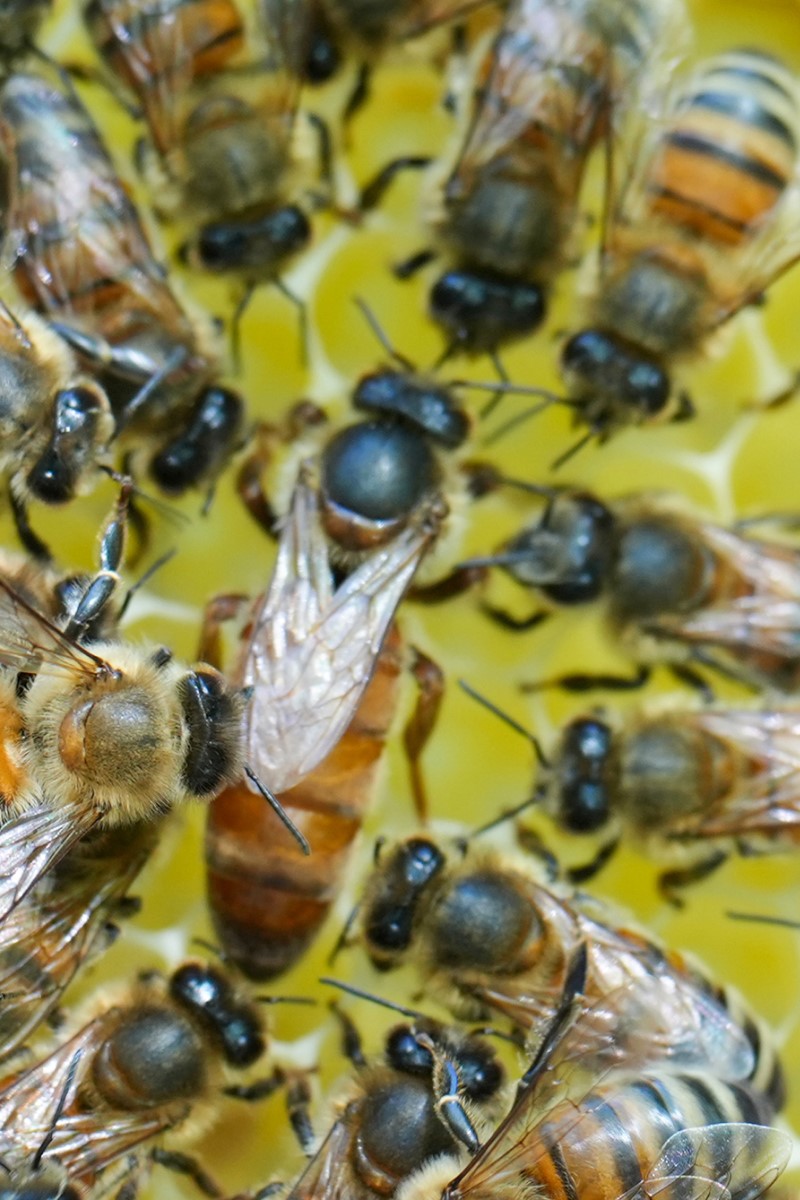Tens of thousands of honey bees are on the move at BER every day
Always on duty for us: Since spring, the honey bees at BER have once again been buzzing through the Schönefeld air every day, searching for food in the fruit trees and on the flowering (and specially unmown) meadows of the airport company's campus. The home of the useful insects are two beehives located not far from the former Schönefeld airport on the administrative grounds of the airport company. The approximately 60,000 bees, which are divided between two colonies, are looked after here by two beekeepers.
Bee monitoring
Like every early summer, the bees are producing honey again. It is not only delicious, but also serves a scientific purpose at the airport. For years, honey, wax and pollen have been tested for pollutants from air traffic - so far with clear results. Bee monitoring shows that air traffic has no influence on bee products. The airport honey is safe to eat and of the same quality as honey from the Schorfheide biosphere reserve, the reference site for the airport company's bee monitoring.
Development of the bee colonies
Until last autumn, there were more than 100,000 bees and up to nine colonies on the airport company's campus. However, several colonies fell victim to a woodpecker, which destroyed some of the hives in the winter in search of food, whereupon several animals presumably died of stress and cold. Other colonies were also affected by the enormous change in weather in late autumn, when many warm November days with air temperatures of 10 degrees and more were suddenly followed by cold spells in November and especially in December with almost two weeks of continuous frost.
The two remaining colonies are currently being intensively cared for and are enjoying good health. In the last few weeks, five offspring have already been formed, which are now to establish themselves and develop into new bee colonies by next year. Three hives are currently raising the necessary queens themselves, two other hives are supported by purchased queen bees.
The information published on this page is current as of the date of publication or update.

